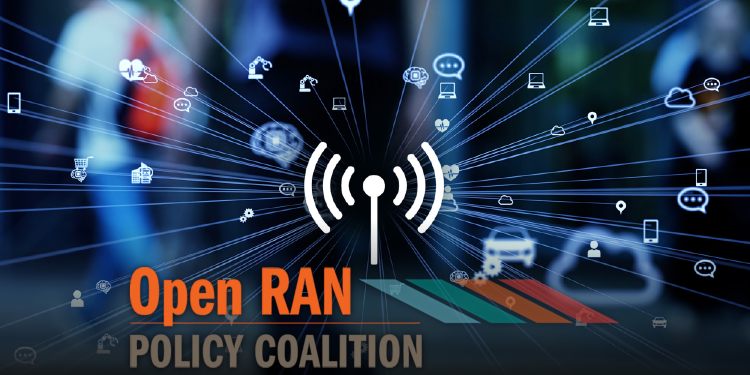Cellular phones and towers are based on radio technology, but while there are many phone makers, relatively few companies provide the cell tower hardware carriers need to build their networks — an issue that threatens both the security and timing of 5G rollouts. Today, 31 tech companies announced the Open RAN Policy Coalition, a group that will lobby the U.S. government to increase competition in the tower hardware space.
In a nutshell, the Coalition is working to change the way cell tower radio access networks (RANs) work, such that multiple vendors’ “open” tower radios, hardware, and software can be used interchangeably rather than requiring one vendor’s proprietary “closed” products. The group wants the U.S. to fund open RAN research and development, test interoperable solutions, and offer incentives to diversify the network supply chain — a process that could help “new innovators” enter the RAN market by lowering existing barriers to entry.
That could be good news for small vendors of network components, but it’s likely to benefit bigger players with global ambitions. Beyond improving national or regional cellular networks in the U.S., it may also lead to more aggressively priced and widely available enterprise private 5G networking gear, as well as broader support for future wireless standards — perhaps geared towards military or otherwise ultra-secure communications.
Getting government backing for 5G and later network development isn’t as far-fetched as it might have seemed several years ago. The U.S. has spent the last two years aggressively chasing Chinese RAN provider Huawei out of U.S. 5G network installations over security concerns, but there’s no viable U.S. rival capable of picking up Huawei’s lost business. U.S. officials have openly discussed propping up European providers Ericsson and Nokia, or funding a domestic alternative, though practicality and timing have remained problematic, especially since Huawei’s rivals are racing to meet growing international demand for 5G networking gear.
June 5th: The AI Audit in NYC
Join us next week in NYC to engage with top executive leaders, delving into strategies for auditing AI models to ensure fairness, optimal performance, and ethical compliance across diverse organizations. Secure your attendance for this exclusive invite-only event.
“As evidenced by the current global pandemic, vendor choice and flexibility in next-generation network deployments are necessary from a security and performance standpoint,” Open RAN Policy Coalition executive director Diane Rinaldo explained. She suggests that the U.S. requiring open RAN interfaces will improve security and interoperability across multiple vendors.
As the Coalition’s founding membership roster indicates, there’s no shortage of companies interested in getting more involved in the RAN business, which will demand millions of tower radios globally in the 5G era alone. In addition to network hardware and component providers Cisco, Fujitsu, IBM, Intel, NEC, Qualcomm, and Samsung, the list includes cloud computing giants AWS, Dell, Facebook, Google, Microsoft, and Oracle, plus U.S. cellular carriers AT&T, Dish Network, and Verizon.
Interestingly, Japanese carriers NTT Docomo and Rakuten Mobile are also part of the group, along with international carriers Telefónica and Vodafone. Other members include software and radio companies Airspan, Altiostar, CommScope, Juniper Networks, Mavenir, NewEdge Signal Solutions, Parallel Wireless, US Ignite, VMWare, World Wide Technology, and XCOM-Labs.
Some of the members of the Open RAN Policy Coalition are also involved with other groups working in the space, including the O-RAN Alliance and Telecom Infra Project, which formed a liaison agreement in February to move forward together on open interface standards. The Coalition notes that testing is already underway to further open RAN initiatives, and multiple members — notably including Japan’s NTT Docomo and Rakuten — are already using interoperable hardware in early 5G deployments.

